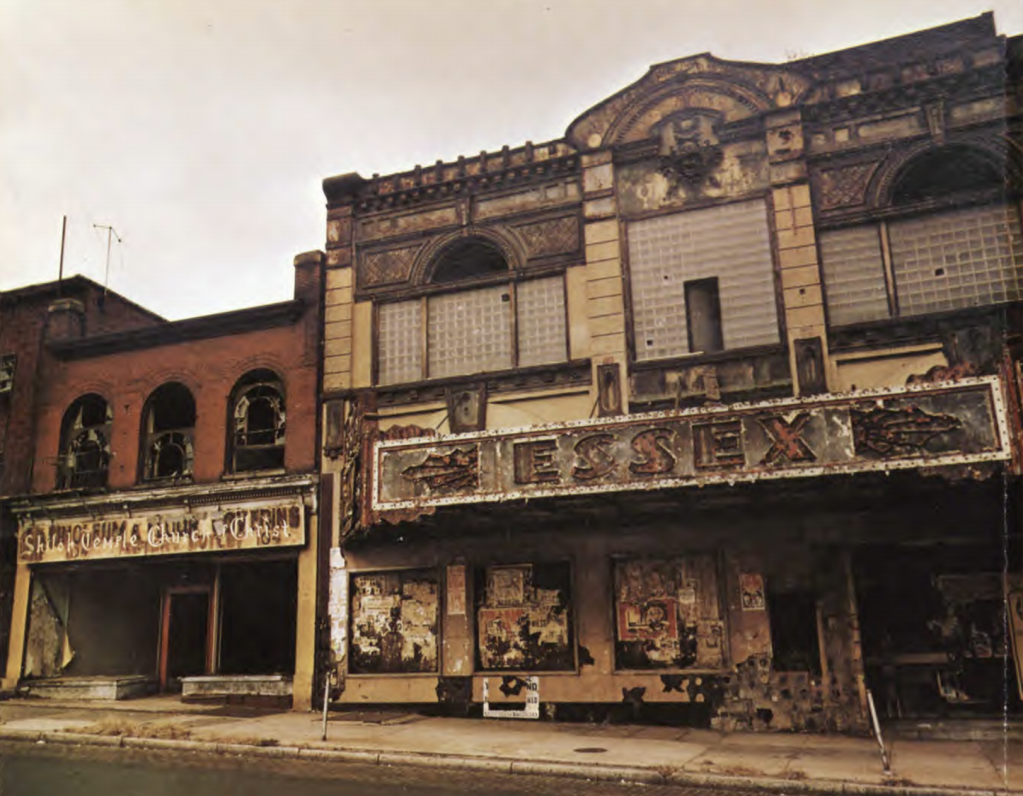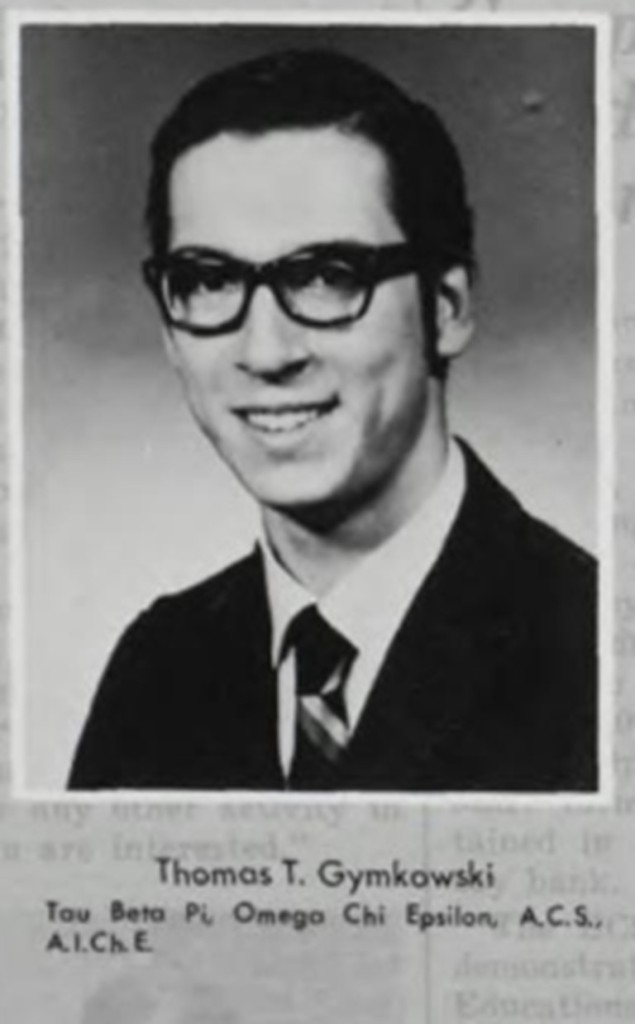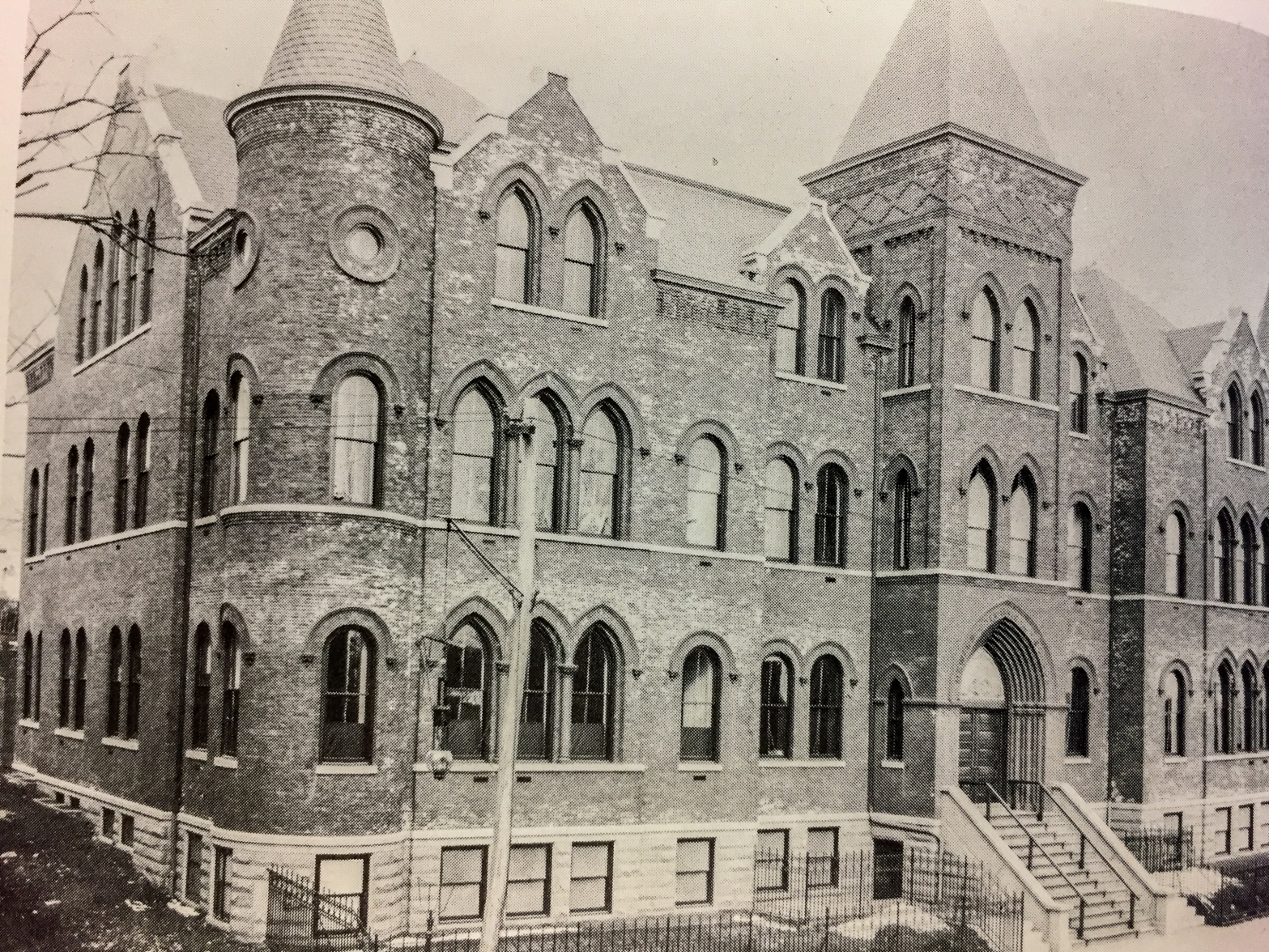After completing mandatory night courses in algebra and trigonometry at Union Junior College I transferred to Newark College of Engineering (NCE) with a major in mechanical engineering. After the first semester, I switched from mechanical to chemical engineering continuing in the evening program. While I was working at Lockheed in Edison, NJ and attending evening classes in downtown Newark. It was a tough schedule getting cleaned up after working in the machine shop all day and driving over an hour to get to class by 6:00 pm. Classes ended at 10:00 pm, and then I faced another one hour drive home. I didn’t even begin studying and completing the homework assignments until nearly midnight.

After two years of this routine and realizing that as an evening student it would take another four years to graduate with a degree, I began to contemplate transferring to a full-time day program. I reckoned that as a full-time student it would take me only another two years to complete the requirements for my Bachelor’s degree in Chemical Engineering. Joann was working full time at the Bell Telephone company and between the little money we saved and her salary I believed I could finish my studies in two years and so I resigned from Lockheed to pursue engineering as a full time student.
The Newark College of Engineering campus is located on High Street in downtown, Newark, NJ. It is basically in the geographic center of one of most depressing ghettos in the United States. Today, there is beautiful student housing in dormitories on campus, but back then it was strictly a commuter school with no on campus parking. You needed to find a parking space on the street wherever you could. This environment made night school quite an experience! You would spend the last two hours in class learning about advanced stuff like partial differential equations and functions of a complex variable and then get down to the basics like getting to your car alive.

The Volvo – Commuting to school
I bought a cheap used car, a 1962 Volvo B18. It was cheap to purchase and economical to run and a great commuter car to get back and forth from school.

This was the second car I located and bought for myself. And it was a good one. I drove this car to Newark when I was a student. I drove it for over 200,000 miles, worked on it myself and eventually sold it for $100.
The big problem at school was parking. Parking in a lot was expensive and you could almost never find a spot close to campus. The problem was solved one day when I had an automobile accident on the highway returning home from class. I was on the Garden State Parkway when suddenly the traffic ahead of me came to an abrupt halt. I stopped in time but the guy behind me didn’t and crashed into the rear end of my car. The car was crushed in about a foot from the rear bumper. We exchanged all the necessary insurance information and I drove the rest of the way home. The guy that hit me didn’t have adequate insurance and I really didn’t have the funds to fix up the car properly so I simply replaced the rear taillights and continued to drive it as it was.
I noticed that the area surrounding the campus had a lot of abandoned cars on the street. It looked pretty much like a war zone. These assorted wrecks were haphazardly abandoned on the street around the campus, and it seemed they were never towed away. Just too many I guess for the police to keep up with. So, I got an idea. The next day I put the license plates on my car with wing nuts so I could easily and quickly remove and replace them. I would drive around the school until I found an empty spot, usually in a no parking zone, and I would pull in at a haphazard angle, take the plates off and put them in my briefcase. I would leave the windows wide open and go to class with my license plates in my briefcase. With the rear end bashed in the car looked like it was already abandoned. I did this every day for two years and the car was never towed. It was always there where I left it and was there when I returned at the end of the day. I would put the license plates back on with the wing nuts and be on my way.


When I graduated I put the car up for sale. It had over 300,000 miles on it and looked like hell but still ran good. I advertised it in the newspaper as a “good parts car”. Two young guys showed up to look at it and as it turned out they were both students at NCE. I told them about my “parking system” and they bought the car on the spot for $100. I presume they used the same system as I did and never heard from them again. Happy customers!
Tolls on the highway were another problem. I had to pass two toll booths in each direction every day and each was $0.25 so it was a dollar a day fore and back. That was just the beginning of the introduction of automated toll collection machines and one booth on the far right lane was automatic and the others were manned by toll collectors. One morning on the way to class I entered the automated lane, tossed a quarter and accidently missed the machine. The quarter bounced across the road and the toll collector in the adjacent booth just waved and signaled me to keep going. There was a lot of traffic on the road and he didn’t want to hold things up so he just waved me through.
The next day I was armed with a bunch of pennies. I tossed a couple of pennies at the automated collection basket and purposely missed. They tingled across the road and sure enough the toll collector waved me through. So, from then on, each day cost about 8 cents instead of a dollar. I’m sure the toll collector caught on but judging from the look of the car, all bashed in as it was, and the fact that I was a just young student he purposely let it slide.
Tuition was another problem. I was able to get several scholarships as my grades were good and combined with student loans and a little disposable income from savings I could just about manage the tuition. So, I transferred to days and started a full time program.
Things went well for the first year of full time studies but I ran into a snag the second year. I was then what was known as a non-matriculated student. Since I transferred from Junior College and then took night classes I wasn’t following the full time curriculum. And since some courses were only offered once a year. The result was it would take an additional year of full time studies to complete the requirements for my degree. I had only planned on two years full time and I started to run out of money.
I made an appointment with a student advisor to see what could be arranged. He told me nothing could be done and I would have to continue for another year beyond what I had planned. I had already been an evening student and knew the procedure for registering as a part time student and of course knew the procedure for full time enrollment. I studied the curriculum and discovered that if I took a maximum course load at night and as well as a maximum course load during the day I could almost meet all the requirements with the exception of two courses. They told me no, I couldn’t do that, the program would be too difficult and I wouldn’t be able to keep up.
I regarded that as bad advice, so I ignored it and registered as a full time student days and went back a few days later and registered as an evening student with a full course load at night. The administration never discovered this. For two semesters, a full academic year, I was a full time day and full time night student simultaneously.
How did I do? I was very highly motivated and so by the end of that year achieved straight A’s in all of my courses. Unfortunately, even though I had enough credit hours, I was two required courses short of a bachelor’s degree. That was in 1969.
I applied for a full time engineering job anyway and was hired by the CE Lummus engineering company despite the fact that I didn’t have those two courses. Nevertheless, Lummus hired me as a junior process engineer with a full engineering starting salary and I was also eligible for the Lummus tuition refund program. I took the two required courses evenings as well as a graduate course in advanced thermodynamics and graduated magna cum laude in 1970. In my entire academic program at NCE I received all A’s and one C (in Industrial Management) for a grade point average of 3.76 out of a perfect 4.00.

I graduated in 1970 among a total of 750 engineering students with a class rank of third. The only two students that beat my average were a good friend, Tom Gymkowski, summa cum laude with a grade point average of 3.85 and an Asian female student, Sue Chen who also graduated summa cum laude with a perfect 4.00 average. My average wasn’t too bad for a guy that barely got out of high school with C minus average. It was all about a keen interest in the engineering program and perhaps most importantly a strong motivation to excel.
So long, good luck and have a nice day….


